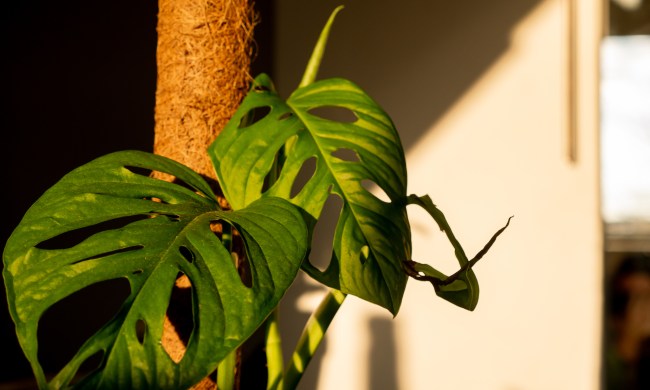Medinilla magnifica care is actually fairly straightforward, especially if you’re used to caring for plants that are native to tropical environments. In their natural habitats, medinilla plants are shrubs that can grow up to four feet in size; however, with proper pruning and trimming, it’s easy to keep your medinilla magnifica at a size that fits your space. Because it’s used to humid environments, you’ll see that medinilla plant care will focus strongly on the temperature and humidity of your home.
But what if your home isn’t humid, or you live in a dry climate? It can be a bit more difficult to keep a medinilla magnifica alive, but not impossible. Read on for our best care tips.

Growing medinilla magnifica in pots
Like many native tropical plants, medinilla magnifica usually prefers warmer environments. In rainforests, they can be found growing as epiphytic plants that use trees for support. Epiphytic plants differ from parasites in that they don’t harm what they use for support but simply grow alongside it and coexist.
You can mimic a similar environment when growing medinilla magnifica in pots. It’s recommended to use a potting mix, like one made specifically for orchids, that’s designed to allow more air flow to the roots of the plant. Medinilla plants will thrive in USDA hardiness zones 10 and 11, where you’ll even be able to keep them as a patio plant in the warmer months.
For other zones, be aware that your home may not be the best suited for medinilla magnifica plants if there aren’t consistent temperatures and humidity levels. For that reason, many gardeners will keep them in greenhouses where they can better control the environment. If you don’t have the space for a greenhouse but would still love to try your hand at growing a medinilla magnifica, you can always purchase a humidifier or keep a tray filled with small pebbles and water in its vicinity.
Ideal environmental and growing conditions
Medinilla magnifica plants love bright indirect lighting and hate direct sunlight, especially at the hottest points of the day/year. In order for the plant to thrive, you should keep it in an area where the temperature is consistently between 70° and 75° F.; however, the plant will do OK in temperatures down to 64°. You should keep the temperature slightly lower (still staying about 60) in the winter than in the summer, but avoid going below 50° F. as that can cause damage to the plant.
How much water does a medinilla plant need?
A lot of medinilla plant care can be traced back to its native environment. Medinilla plants should be watered thoroughly throughout their growing season, which begins around early to mid-spring. Outside of their growing season, you should reduce the amount of watering as the medinilla magnifica will only need enough to keep from drying out.
Although it enjoys moist soil, like most plants, your medinilla magnifica will be unhappy in soaked, soggy water. A good rule of thumb is to water when the top part of the soil is dry. If the top of the soil is still wet, there’s no need to water. It’s equally as important to have a pot with good drainage. This will help you monitor and keep track of how much water your plant is getting because excess water will be able to drain out the bottom.
Should you fertilize your medinilla plant?
Any standard houseplant or tropical plant fertilizer should be fine during the growing season; however, large amounts of nitrogen will cause the medinilla magnifica plant to grow more luscious foliage as opposed to beautiful blooms. To encourage even growth, you can use a liquid compost, which will also aid in maintaining a mildly acidic pH in the soil.

Can medinilla magnifica be propagated?
If cared for well, medinilla magnifica can be propagated — though propagating at home can be rather difficult. Most of the time, home propagation for these plants is attempted via cuttings. Viable cuttings should have at least two leaves and are able to root in some damp sphagnum moss. If you want to decrease the strain on the stem, you can remove two-thirds of the leaves on the cutting. Medinilla plants can also be grown from seed from the fruit clusters that follow their flowers; however, the fruits won’t grow without being pollinated, so if your medinilla is a strictly indoor plant, you may just find it easier to purchase new medinilla plants from the nursery.
With proper care and the proper environment, you’ll have a thriving medinilla plant to brighten your home. It may take some adjustments at first, but as long as your efforts and conditions are consistent, there will be little to no trouble!


